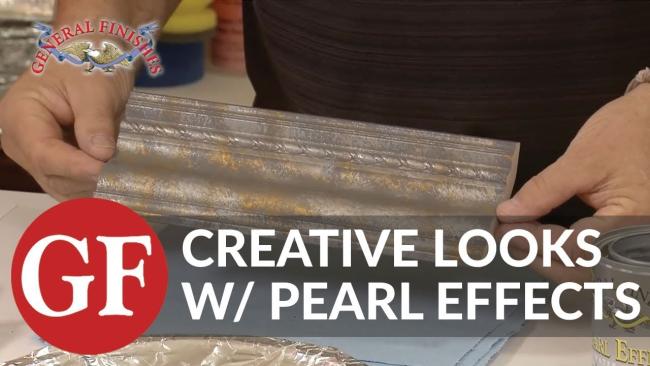PRODUCTS FEATURED:
- GENERAL FINISHES PEARL EFFECTS: Tawny
- GENERAL FINISHES EXTENDER
- GENERAL FINISHES PEARL EFFECTS: Argentine
- GENERAL FINISHES PEARL EFFECTS: Copper
- GENERAL FINISHES PEARL EFFECTS: Bronze
- GENERAL FINISHES HIGH PERFORMANCE TOPCOAT: Satin
Pearl Effects can be painted or sprayed straight from the can for a solid color or thinned to create specialty finishes. We like to add 5% Extender for spraying and glazing and to improve open time in low humidity.
Always use Pearl Effects over a sealed surface such as General Finishes Milk Paints, sealed water-based stains, water-based topcoats or any primer.
DRY BRUSH TECHNIQUE USING ONE COLOR:
The first dry brush demo will be Tawny over Lamp Black that's been sealed with High-Performance Satin.
The key here is to keep dabbing on very soft and subtle. You want to build color very soft. As the brush gets charged with paint you can just keep adding color wherever you'd like it. You can also dry brush multiple colors.
DRY BRUSH TECHNIQUE USING MULTIPLE COLORS:
In this demo Tom will apply Argentine, Copper and Tawny over two coats of Lamp Black Milk Paint sealed with High-Performance Satin.
The key here is just keeping it really dry. The silver is a little stronger so it will show up quicker. I'll follow it with my next color which is the Tawny. This adds a second dimension of color which really will make those moldings and those routed edges jump off the surface there. I just want to put a little bit of Copper on here.
Next we'll show two stippling techniques also known as pouncing. In the first we will use a heavy additive stipple. Additive means painting on without removing any of the Pearl Effects. I'm going to do a stipple of Argentine and Tawny over two coats of Driftwood Gray milk paint sealed with two layers of High-Performance.
ADDITIVE STIPPLE:
I'm going to take a little bit more paint because I want a heavy application & pounce the color onto the surface. The key is random look. I'm going to come back with my second color, Argentine silver.
SUBTRACTIVE STIPPLE MULTIPLE COLORS:
For the next demo we will use a subtractive stipple of Copper, Bronze and Tawny over Brown Mahogany water based stain. The paint is applied and then removed with a brush, sponge or towel to create a textured effect.
I will pounce the color into the wood right on the surface. It's kind of a stiff up-and-down motion. You don't want to be dragging it, you want to make it look like it's been blotted on. Then I'll will use three different colors. Do a little bit darker color, add to the background to help soften out that gold which is a brilliant color. Then I'll come in with my third color.
Take a clean cloth, something without a lot of texture or pattern and and blot. Look at how those colors just kind of blend together. As a final step I'll take a soft bristle brush and I will come down and blend all those lines together so it looks like its layers of color almost like oxidation.
MIXING PEARL EFFECTS WITH TOPCOAT AS A GLAZE:
You can mix Pearl Effects with our water-based topcoats and glazes to produce a subtle look. We're using this mix of High Performance and Burnished which I have in this jar. Just get it on the surface. Now come back and do a subtractive stipple technique. This will give that surface a really soft shimmer. You can take off as much as you want but this technique is fabulous for any of your bright reds, bright greens and bright yellows. Those colors are really designed for glazing, pouncing and stippling.
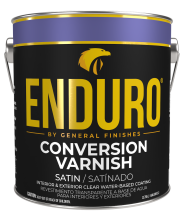 Enduro Water-Based Conversion Varnish
Enduro Water-Based Conversion Varnish
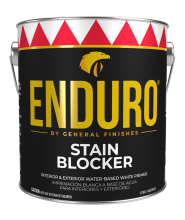 Enduro Water Based Stain Blocker Primer
Enduro Water Based Stain Blocker Primer
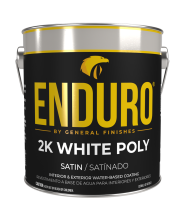 Enduro Water-Based Tintable 2K White Poly
Enduro Water-Based Tintable 2K White Poly
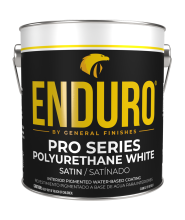 Enduro Water-Based Pro Series White Polyurethane
Enduro Water-Based Pro Series White Polyurethane
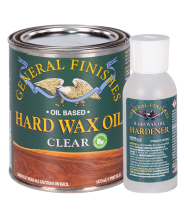 Hard Wax Oil & Hardener
Hard Wax Oil & Hardener
 Gel Stains
Gel Stains
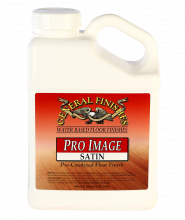 Pro Image Flooring Topcoat
Pro Image Flooring Topcoat
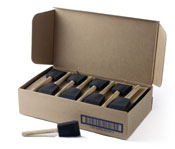 Jen Poly Brushes
Jen Poly Brushes
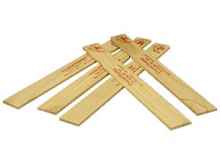 Stir Stix
Stir Stix
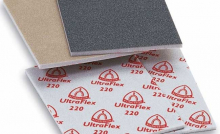 Ultraflex Softback Sanding Sponge
Ultraflex Softback Sanding Sponge

